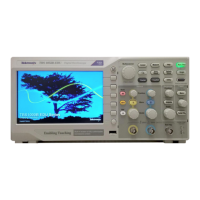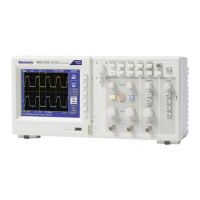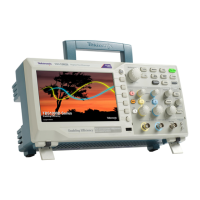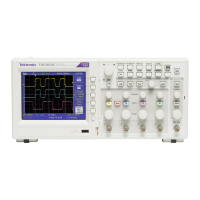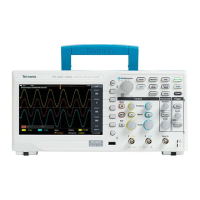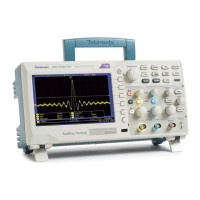Autoset
When you push the Autoset button once, the oscilloscope identifies the type of
waveform and adjusts controls to produce a usable display of the input signal.
When you press the button for more than 1.5 seconds, it will perform the
Autorange function. It will displays the Autorange Menu and activate or
deactivate the autoranging function.
Function Setting
Acquire mode Adjusted to Sample or Peak Detect
Cursors Off
Display format Set to YT
Display type Set to Dots for a video signal, set to Vectors for
an FFT spectrum; otherwise, unchanged
Horizontal position Adjusted
Horizontal scale (seconds/division) Adjusted
Trigger coupling Adjusted to DC, Noise Reject, or HF Reject
Trigger holdoff Minimum
Trigger level Set to 50%
Trigger mode Auto
Trigger source Adjusted; refer to the information after this table;
cannot use Autoset on the Ext Trig signal
Trigger slope Adjusted
Trigger type Edge or Video
Trigger Video Polarity Normal
Trigger Video Sync Adjusted
Trigger Video Standard Adjusted
Vertical bandwidth Full
Vertical coupling DC (if Ground was previously selected); AC for a
video signal; otherwise, unchanged
Volts/Div Adjusted
The Autoset function examines all channels for signals and displays
corresponding waveforms. Autoset also determines the trigger source based on
the following conditions:
■
If multiple channels have signals, the oscilloscope displays the channel with
the lowest frequency signal.
■
If no signals are found, then the oscilloscope displays the lowest-numbered
channel when Autoset was invoked.
■
If no signals are found and no channels are displayed, then the oscilloscope
displays and uses channel 1.
Reference
78 TBS1000B and TBS1000B-EDU Series Oscilloscopes User Manual

